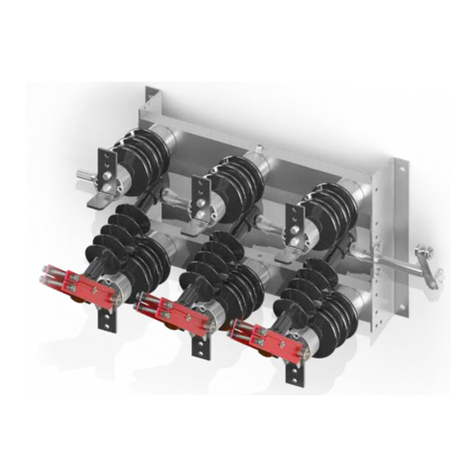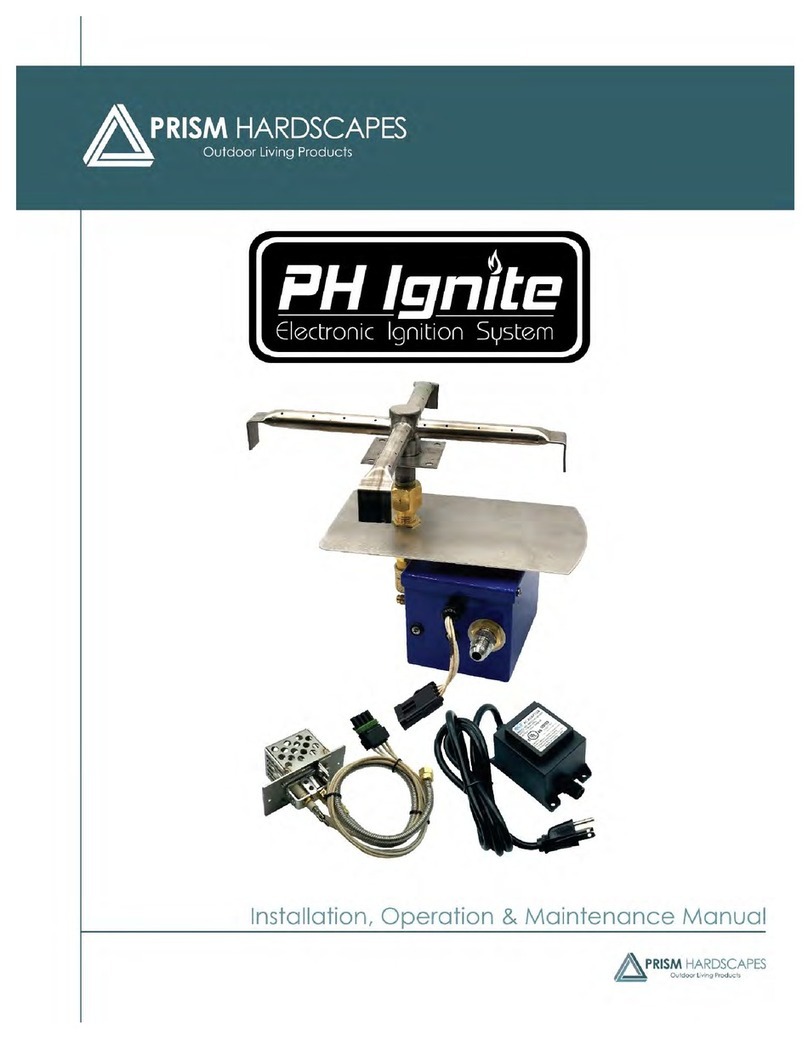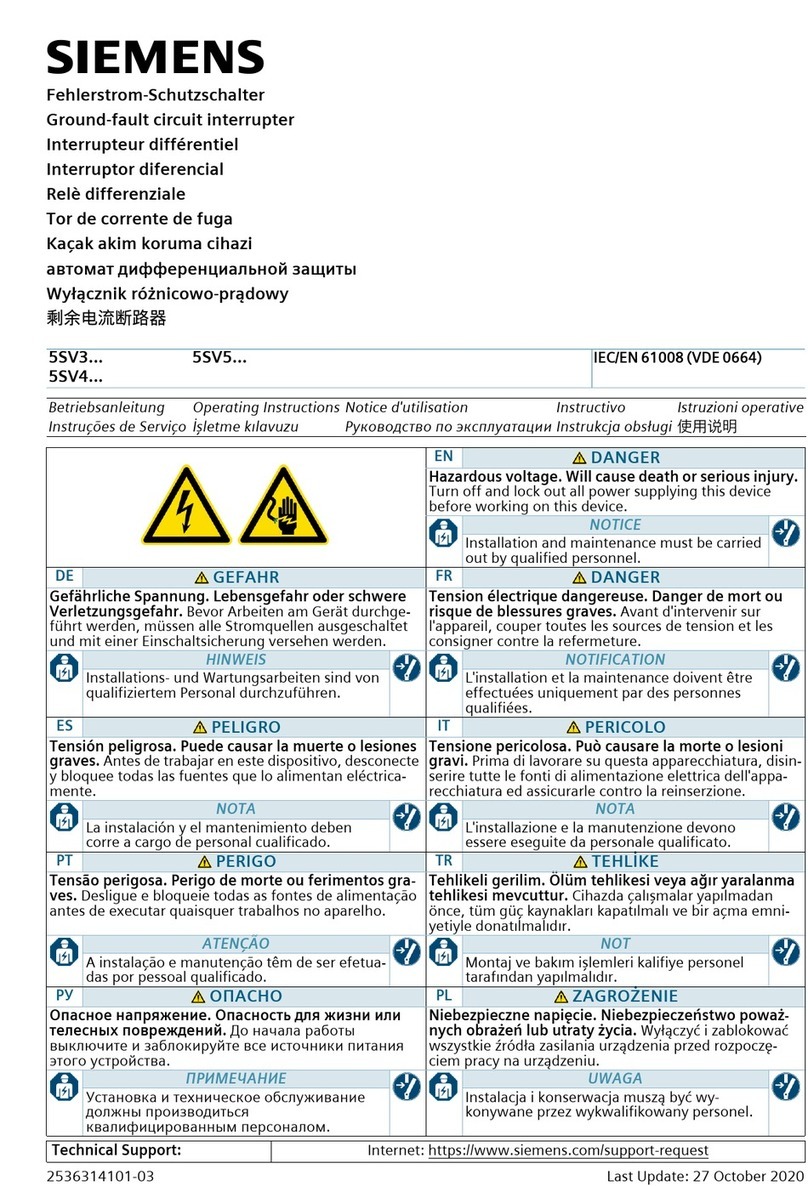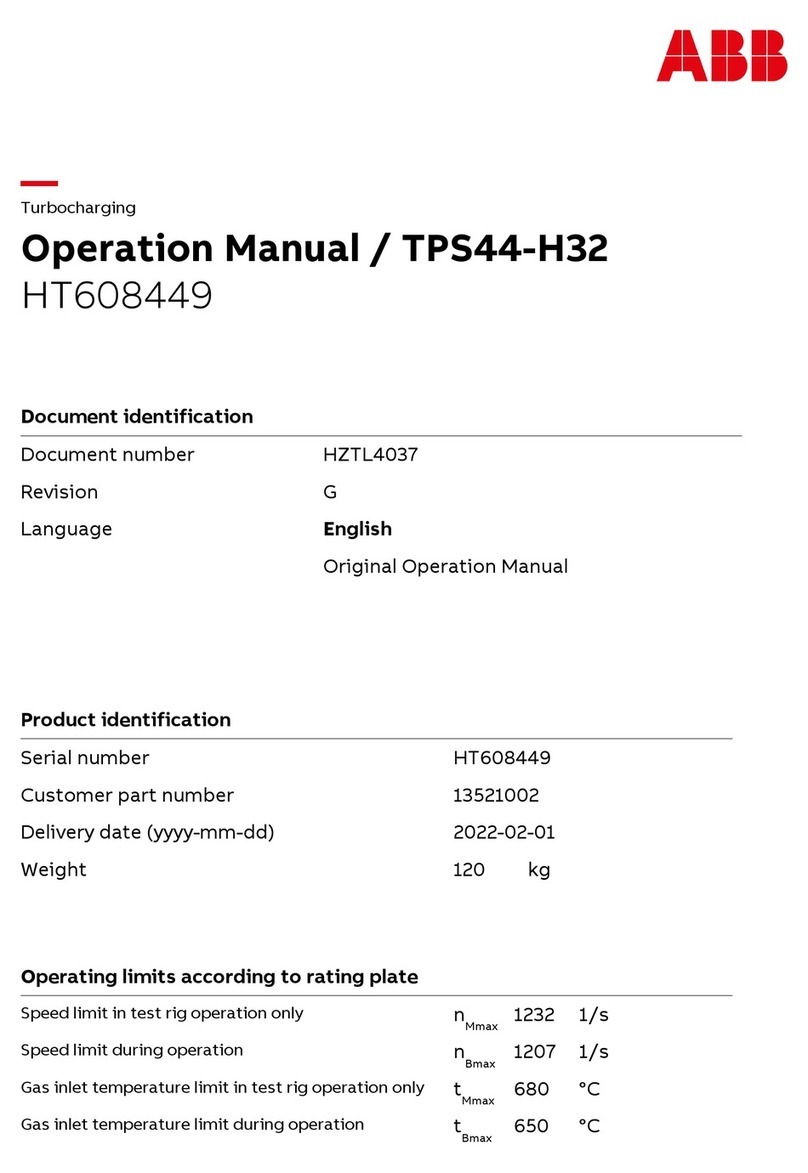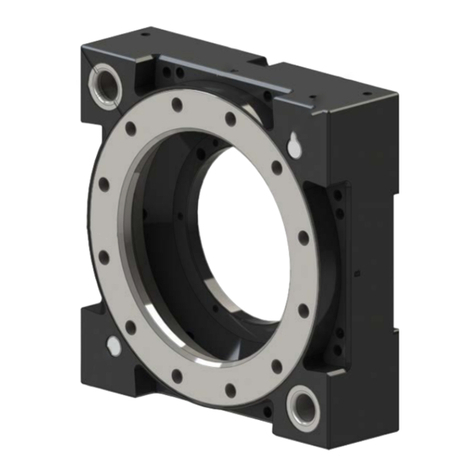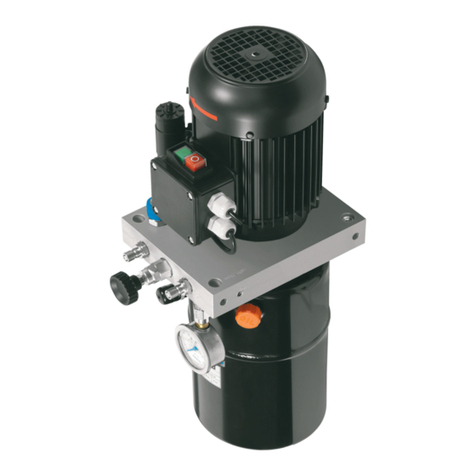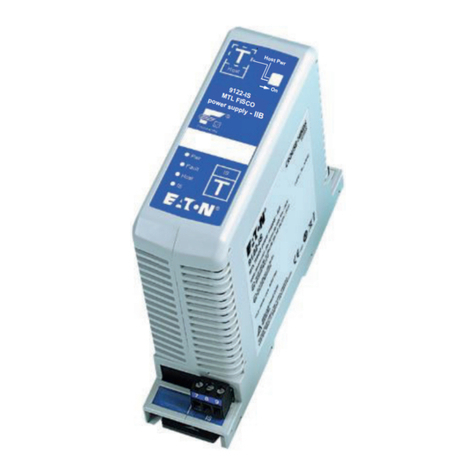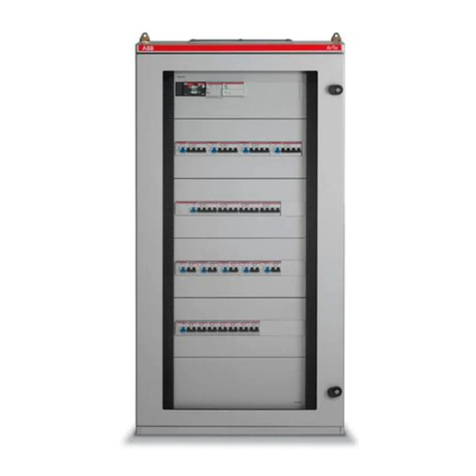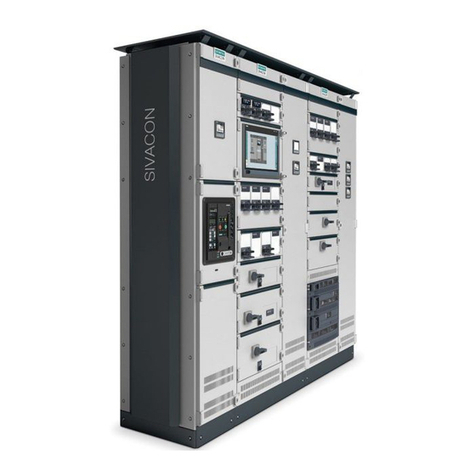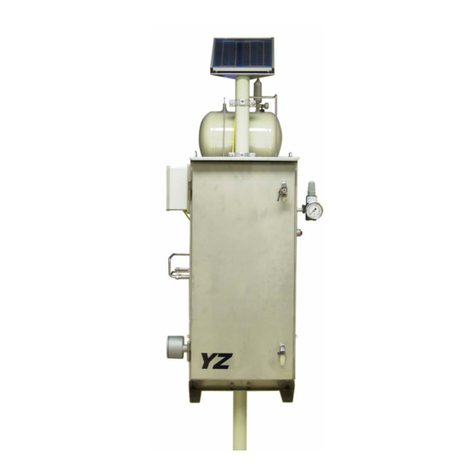arboga E 312 User manual

INDUSTRIVEJ 3-9 · DK-9460 BROVST · DENMARK
TEL.: +45 98 23 60 88 · FAX: +45 98 23 61 44
Manual
E 312 - EP 312 –EPB 312- BOP 312
Industrial Grinding Machine

2
EC declaration of conformity
hereby declares that
ARBOGA Double Ended Grinders are manufactured in accordance with the provisions
of the European Parliament and Council Directive 2006/42 / EC of 17 May 2006
And also in accordance with:
•Low Voltage
•EUROPEAN PARLIAMENT AND COUNCIL DIRECTIVE 2014/35 / EU of
26 February 2014
•EMC
•EUROPEAN PARLIAMENT AND COUNCIL DIRECTIVE 2014/30 / EU of
26 February 2014
ARBOGA A/S
Industrivej 3-9
DK-9460 Brovst, Denmark
www.scantool-group.com
Tel. + 45 98 23 60 88
Fax: + 45 98 23 61 44

3
Table of Contents
1TRANSPORT & HANDLING 4
1.1 TRANSPORT 4
1.2 HANDLING 4
1.3 PLACING 4
2OPERATOR’S GUIDE 6
2.1 OPERATION 6
2.2 SAFETY RULES FOR STATIONARY POWER TOOLS. 6
2.3 MAINTENANCE 8
3BELT ARM 9
3.1 ASSEMBLING AND MOUNTING OF THE BELT ARM 9
3.2 CHANGING THE GRINDING BELT 10
3.3 MAINTENANCE OF THE BELT ARM 12
3.4 OPERATING THE BELT ARM 12
4KU 12-EXHAUST SYSTEM 13
4.1 ASSEMBLING AND MOUNTING THE KU 12-EXHAUST UNIT 13
4.2 MAINTENANCE OF THE KU 12-EXHAUST UNIT 13
516-EXHAUST UNIT 14
5.1 MAINTENANCE OF EX-16-EXHAUST UNIT 14
6SPARE PARTS LIST 15
6.1 MACHINE DISPLAY OF E312 –EP 312 –EPB 312 –BOP 312 15
6.2 SPLIT DRAWING OF E312 BASIC MODEL 16
6.3 SPARE PARTS LIST FOR E312 16
6.4 SPLIT DRAWING OF BO 10 BASIC MODEL 17
6.5 SPARE PARTS LIST FOR BO 10 17
6.6 SPLIT DRAWING OF E312 COVER 19
6.7 SPARE PARTS LIST FOR E312 COVER 20
6.8 SPLIT DRAWING OF EPB 312 BELT ARM 21
6.9 SPARE PARTS LIST FOR EPB 312 BELT ARM 23
6.10 SPLIT DRAWING OF POB 312 BELT ARM 25
6.11 SPARE PARTS LIST FOR POB 312 BELT ARM 26
6.12 SPLIT DRAWING OF KU 12-EXHAUST UNIT FOR EP 312 27
6.13 SPARE PARTS LIST FOR KU 12-EXHAUST UNIT FOR EP 312 28
6.14 SPLIT DRAWING OF EX-16-EXHAUST UNIT FOR EPX 312 29
6.15 SPARE PARTS LIST FOR EX-16-EXHAUST UNIT FOR EPX 312 29
7TECHNICAL DATA 30

4
7.1 TECHNICAL SPECIFICATIONS 30
7.2 DIMENSIONS 31
7.3 WIRING DIAGRAM 31
7.4 WARRANTY 34
1 Transport & handling
1.1 Transport
E 312 Industrial grinding machine is delivered mounted on a pallet packed in
protective wrapping.
1.2 Handling
E 312 Industrial grinding machine is portable in the packing in which it is
delivered. If the grinding machine is supplied with a pedestal please note that the
pedestal is safely secured to the transport pallet.
1.3 Placing
Placing of the industrial grinder must take place on a firm and level ground.
Tighten the grinding machine to the floor or the work table by using the four holes
used for securing the machine to the pallet.
The wiring of the machine must be performed within the given range on the motor
sign.
The machine must be wired according to the Wiring diagram (see section 6.3).
The wiring must be performed by an authorized electrician. Make sure that the
motor (and eventually KU 12-exhaust system) has the correct direction of rotation
(see the arrow on the cover).
Fig.: 1.1
Control before use that the outer cover (A) (see fig.: 1.1) is solidly mounted to the
inner cover. The outer cover must be mounted during operation. Only have the
outer cover dismounted during changing the grinding wheel. The grinding wheel
(B) must be able to rotate freely without being loose. The tool rest (C) must be
adjusted to a distance of appr. 2 mm from the grinding wheel.
The eye shield (D) must be clean and adjusted to the right position and the spark
arrester (E) is adjusted to a distance of appr. 5 mm from the grinding wheel and
lightly tightened.

5
All these checks and adjustments may only be performed while the machine is
disconnected.
First time you start up the machine please let the machine run at max speed for 5
minutes before start grinding. Make sure to stay in a safe distance of the machine
during the test run.

6
2 Operator’s guide
2.1 Operation
After wiring and adjusting of the above is the grinding machine is now ready for
use. Slowly lead the work piece to the grinding wheel and avoid uneven grinding.
Always grind with a light pressure to avoid destruction of the grinding wheel and
not to overload the motor. Let the machine run at max speed before start grinding.
Always pursue to grind as close to max speed as possible. Secure the work piece
if possible by using a vice or clamps. This is safer than holding the work piece in
your hands.
Avoid grinding on the side of the grinding wheel unless grinding on a cup wheel.
Do not stop the rotation of the grinding wheel by pressing a work piece against it,
let it stop the rotation by itself. It is important to have the work area well lighted.
2.2 Safety rules for stationary power tools.
Follow them to achieve best results and full benefit from your new machine
The very good craftsman respects the tools with
which he works. He knows they represent years
of constantly improved design. He also knows
that they are dangerous if misused.
This is the theme of a new safe-use program for
stationary power tools. The safety rules are
based on approved practices in industrial and
home shops.
1. Know your power tool. Read
the owner’s manual carefully.
Learn its applications and
limitations, as well as the
specific potential hazards
peculiar to this tool.
2. Keep guard in place
and in working order.
3. Ground all tools. If tool is equipped
with three-prong plug, it should be
plugged into a three-hole electrical
receptacle. If an adapter is used to
accomodate a two-prong receptacle,
the adapter wire must be attached to
a known ground. Never remove the
third prong.
4. Remove adjusting keys
and wrenches. Form habit of
checking to see that keys
and adjusting wrenches is
removed before turning it on.
5. Keep work area clean.
Cluttered areas and benches
invite accidents.
6. Avoid dangerous
environment. Don’t use
power tools in damp or wet
locations or expose them to
rain. Keep your work area
well lighted.
7. Keep children away. All
visitors should be kept in a
safe distance from work
area.
8. Make workshop kidproof with
padlocks, master switches, or by
removing starter keys.

7
9. Don’t force tool. It will do the job
better and be safer at the rate for
which it was designed.
10. Use right tool. Don’t force
tool or attachment to do a job it
was not designed for.
11. Wear proper apparel. Wear no
loose clothing, gloves, neckties,
rings, bracelets, or other jewelry
which may get caught in moving
parts. Non-slip footwear is
recommended. Wear protective
hair covering to contain long hair.
12. Always use safety
glasses. Also use face or
dust mask if cutting
operation is dusty. Everyday
eyeglasses only have impact
resistant lenses. They are
NOT safety glasses.
13. Secure works. Use clamps
or vise to hold works, when
pratical. It’s safer than using
your hands and it frees both
hands to operate tool.
14. Don’t overreach. Keep proper
footing and balance at all times.
16. Disconnect tools before servicing and when
changing accessories such as grinding wheels,
polishing mops, grinding belts, blades, bits,
cutters, etc.
18. Use recommended accessories.
Consult owner’s manual for
recommended accessories. Use of
improper accessories may cause risk
of injury to persons.
17. Reduce the risk of
unintentional starting. Make sure
switch is in off position before
plugging in.
15. Maintain tools with
care. Keep tools sharp and
clean for best and safest
performance. Follow
instructions for lubricating
and changing accessories.

8
2.3 Maintenance
The grinding machine must be placed in a dry place to avoid the grinding wheels
getting moist from damp or rain.
The grinding wheel often gets uneven during use and therefore we recommend
that you dress the grinding wheel regularly. When the grinding wheel is worn more
than 25%, we recommend that you change it. An uneven grinding wheel causes
vibrations which with time destroys the bearings in the machine.
Damaged tool rests, eye shields and covers must be replaced immediately to
avoid personal injuries.
When the grinding wheel is to be replaced first the spark arrester (A) (see fig.: 2.1)
is dismounted and then the outer cover (B) is removed. The nut (C) is unscrewed
and the outer flange and the grinding wheel are removed. The new grinding wheel
is not to exceed the measures given on the motor sign on the machine. It is
important that the hoe dimension is correct.
The grinding wheels are supplied with labels placed around the holes on both
sides of the grinding wheel. If these labels are missing or damaged they must be
replaced by labels of the same dimensions immediately.
The new grinding wheel is mounted between the two flanges (D) and the nut (C) is
screwed back on and tightened. The nut (C) must be tightened enough to hold the
grinding wheel firmly tightened but not too tight as this will cause unwanted
tensions in the grinding wheel.
Fig.: 2.1

9
3 Belt arm
3.1 Assembling and mounting of the belt arm
If the grinding machine is mounted with a grinding cover this must be dismounted
completely before mounting the belt arm.
Mount the telescope arm (A) on the bearing end shield of the machine and then
mount the telescope arm (A) to the box cover (B) by using the fitting for the
telescope arm (C) and securing the box cover (B) by screwing a screw through the
side plate into the holder for the telescope arm (D). The top roll (E) must be inside
the box cover (B).
Fig.: 3.1
The fitting for the telescope arm (C) must not be tightened harder than it is still
possible to adjust the direction of rotation on the grinding belt.
The flanges, contact wheel and the lock reverse nut is mounted (see split drawing
of the belt arm for mounting order). Control that the top roll (E) and the contact
wheel run parallel. The position of the contact wheel can be adjusted by means on
the distance rings supplied.
The top roll (E) can be loosened and adjusted so that it fits the desired grinding
belt length.

10
3.2 Changing the grinding belt
When the grinding belt is worn out it must be replaced the following way: The lid
cover (A) (see fig.: 3.2) on the box cover is opened and the cross handle (B) is
loosened and the handle (D) is tilted back. This way there will be no load on the
grinding belt (C),so that it can be dismounted and a new belt can be fitted in
reverse order. Control that the arrows on the back of the belt correspond to the
direction of rotation. When the new grinding belt is mounted it is necessary to
adjust for straight run with the handle (G), which is loosened on the telescope arm
(E) and the top roll (F) can be turned until the belt runs perfect on the contact
wheel. Now tighten the handle (G).
This adjustment of the grinding belt may only be performed by pulling the
belt by the hands and NOT while the machine is running.
Fig.: 3.2
There are many types of grinding belts and therefore very important to chose the
correct type. You need to consider the material to be processed and you can vary
the grit size, belt material and glue.

11
In this connection we can mention that there are various contacts wheels with
various softness and shapes for different purposes.

12
3.3 Maintenance of the belt arm
Regularly empty the spark arrester (A) (see fig.: 3.3) to prevent hot sparks in
destroying or deforming the grinding belt and contact wheel. If the machine is
supplied with KU 12-exhaust unit regularly check if the suction channels need
cleaning. The dust bag is emptied or changed whenever necessary. The contact
wheel (B) should be replaced if the edges have been worn round or the lane is
defective. Change the graphite pad (C) on the grinding surface when necessary.
Fig.: 3.3
When changing the contact wheel the grinding belt (D) is removed as described
as above.
The nut (E) is unscrewed and the flange (F) is taken of together with the contact
wheel (B). The new contact wheel (B) is mounted in reverse order.
3.4 Operating the belt arm
Grinding on the belt arm can take place both at the contact wheel on the grinding
surface. It is also possible to dismount the grinding surface and grind on the
grinding belt alone. Lead the work piece slowly towards the grinding belt and avoid
uneven grinding. Always use a light but firm pressure to avoid destroying the
grinding belt and overloading the motor.

13
4 KU 12-exhaust system
4.1 Assembling and mounting the KU 12-exhaust unit
The following description on assembling and mounting of the KU 12-exhaust unit.
The angle (A) (see fig.: 4.1) is first mounted at the back of the EPB 312-machine
and then as shown on the KU 12-motor. Dismount the blind stopper at the back of
the EPB 312-machine and mount the connector (B). Dismount the switch on the
EPB 312-machine without unscrewing the cables. Lead the cable (C) through the
connector (B) and mount the protection hose (D) to the connector (B). Mount the
cables from the KU 12-exhaust unit on the switch (see the wiring diagram). Mount
the switch again. Dismount the blind stoppers on the cover or the belt arm and
instead mount the lid (E) with the outlet. Also remember to mount the cork
washers (F). To the fit the suction hoses (G) and mount these with the straps (H).
The KU 12-exhaust unit must before use be mounted with suction hoses on the
outlet (I), which then is connected to the central exhaust unit. If the central
exhaust unit is not equipped with a cyclone, the exhaust from the KU 12-exhaust
unit must be connected to a cyclone which then is connected to the central
exhaust. If there is no central exhaust you have to mount dust bags (J) on the
outlet (I).
In case the KU 12-exhaust unit is mounted on a EP 312 double grinder the cast
pipe bends (K) can be used for mounting the KU 12-exhaust unit to the grinding
machine so that the angle (A) and the suction hoses (G) with accessories can be
left out.
Fig.: 4.1
4.2 Maintenance of the KU 12-exhaust unit
Nothing on the KU 12-exhaust unit needs maintenance besides it is necessary to
check if the suction hoses are in good condition and if the suction channels need
cleaning.

14
5 16-exhaust unit
5.1 Maintenance of EX-16-exhaust unit
Nothing on the EX16-exhaust unit needs maintenance except for it is necessary to
examine if the suction hoses are in good shape and the suction channels need
cleaning. Check and change the dust bag regularly.

15
6 Spare parts list
6.1 Machine display of E 312 –EP 312 –EPB 312 –BOP 312
In the following we have illustrated split drawings and belonging spare parts lists.
Fig.: 6.1
(A) Motor part, (B) Grinding cover, (C) Belt arm, (D) KU 12-exhaust unit.

16
6.2 Split drawing of E 312 basic model
Fig.: 6.2
6.3 Spare parts list for E 312
Pos. no
Description
Ident. no
1
Distance bushing E 312
0744522
2
Bolt unbraco M8x16
0120510
3
Spring disc DIM 8Z
0132594
4
End lid cover LEFT
0739650
5
Bearing 6307 2Z
0137979
6
Lock ring int. ø80
0113913
7
Bearing end shield E 312
0739634
8
Stator frame 1400 RPM
0771073
8
Stator frame 2800 RPM
0771074
9
Rotor cpl. 1400 RPM
0766933
9
Rotor cpl. 2800 RPM
0766968
10
Spring wave 79x71x0,5
0100324
11
End lid cover RIGHT
0739669
12
Connecting piece
0114065
13
DISA –switch
0188815
14
Earth cable
1461327
15
Cable lead through PG11
0105154
16
Grey plastic stopper PG 11
0605550
17
Cable1700-6,78-4G 0,75
0963097
18
Cylinder pin ø6x10
0342734

17
6.4 Split drawing of BO 10 basic model
Fig.: 6.3
6.5 Spare parts list for BO 10
Pos No
Description
Ident. No
1
Collar bushing BO 10
0744522
2
Bolt unbraco M8x16
0120510
3
Spring disc DIM 8Z
0132594
4
End lid cover LEFT
0743968
5
Ball bearing 6307 2Z
0137979
6
Lock ring int. ø80
0113913
7
Bearing end shield BO 10
0739634
8
Stator frame 1400 RPM
0771073
8
Stator frame 2800 RPM
0771074
8
Stator frame 1400/2800 RPM
0771075
9
Rotor cpl. 1400 RPM
0766941
9
Rotor cpl. 2800 RPM
0766933
10
Spring wave 79x71x0,5
0100324
11
End lid cover RIGHT
0743996
12
Connecting piece
0114065
13
DISA –switch
0188815
14
Earth cable
1461327
15
Cable lead through PG11
0105154
16
Grey plastic stopper PG 11
0605550
17
Cable 1700-6,78-4G 0,75
0963097
18
Cylinder pin ø6x10
0342734

18

19
6.6 Split drawing of E 312 cover
Fig.: 6.4

20
6.7 Spare parts list for E 312 cover
Pos No
Description
Cover L
Cover R
1
Machine screw M4x10
0100425
0100425
2
Frame f/eye shield
0111807
0111807
4
Glas 150x150x6 LEXAN clear
0110389
0110389
5
Wing nut M6 Din 315
0741663
0741663
6
Disc ø6,4x11x1,6
0737631
0737631
7
Holder f/belts t/eye shield
0111808
0111808
8
Frame w/holder
0111806
0111806
9
Machine screw M6x30
0331694
0331694
10
Nut M5
0207927
0207927
11
Angle from ARBOGA eye shield
0110012
0110012
12
Auto disc ø5,2x12,7x0,8
0112700
0112700
13
Shaft f/eye shield ARBOGA
0114351
0114351
14
Angle for eye shield
0110038
0110038
15
Spring 5x10 mm
0112911
0112911
16
Machine screw M5x25 PHJX Z
0112732
0112732
17
Bolt unbraco M8x16 Z
0120510
0120510
18
Spring disc Dim 8 Z
0132594
0132594
19
Lid E 312
0744212
0744212
20
Cover E 312 int.
0744123
0744131
21
Disc13x25x2,5 Z
0101494
0101494
22
Steel set bolt M12x40
7654320
7654320
23
Tool rest
0739707
0739707
24
Spring disc Dim 6 Z
1323060
1323060
25
Bolt unbraco M8x25
0123226
0123226
26
Flange int.
0961507
0961507
27
Grinding wheel
-
-
28
Flange ext.
0961515
0961515
29
Nut 1 ¼” WG
0953296
0953318
30
Cover E 312 ext.
0744182
0744182
31
Angle for eye shield
1443593
1443593
32
Terminal cover MF71
0189421
0189421
33
Taptite M4x10
0737607
0737607
34
Holder f/spark arrester
0744255
0744255
This manual suits for next models
3
Table of contents
Other arboga Industrial Equipment manuals
Popular Industrial Equipment manuals by other brands
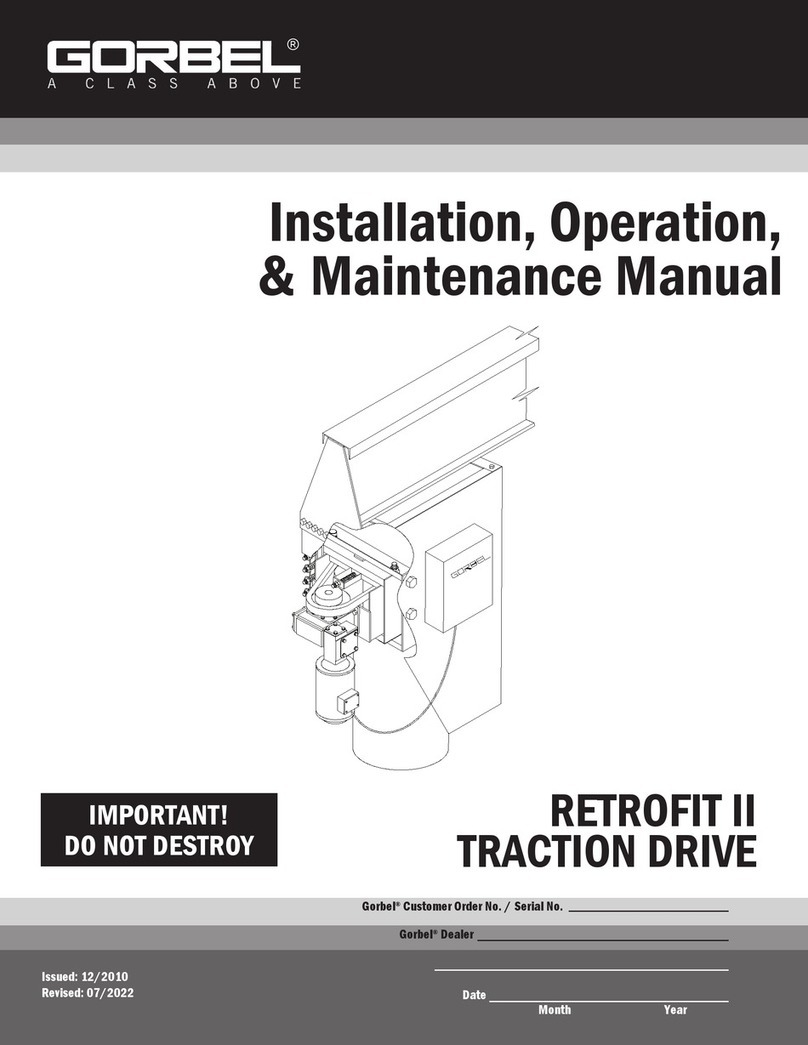
GORBEL
GORBEL RETROFIT II Installation, operation & maintenance manual
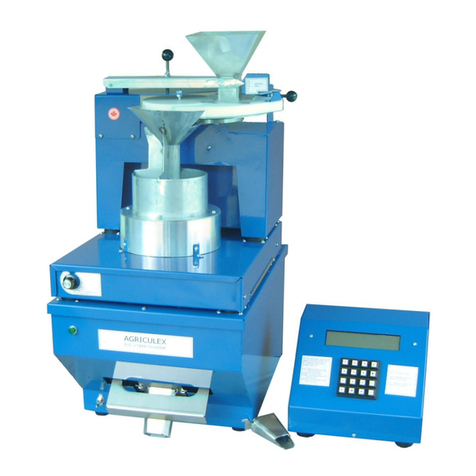
Agriculex
Agriculex ESC-2 Operator's manual

Kval
Kval Acro-HD Operation and service manual
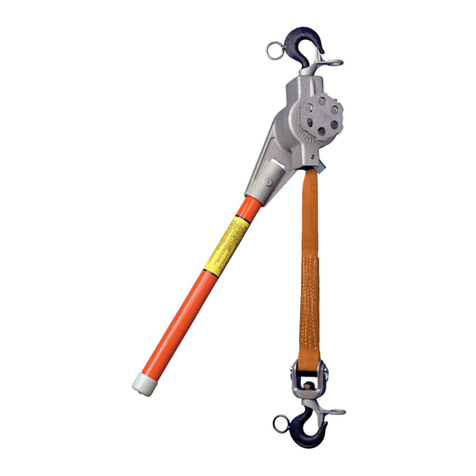
Hubbell
Hubbell CHANCE PSC3090323CE manual
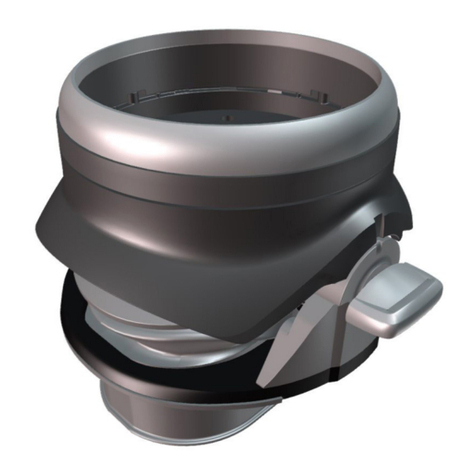
Ultraflex
Ultraflex X72 installation manual
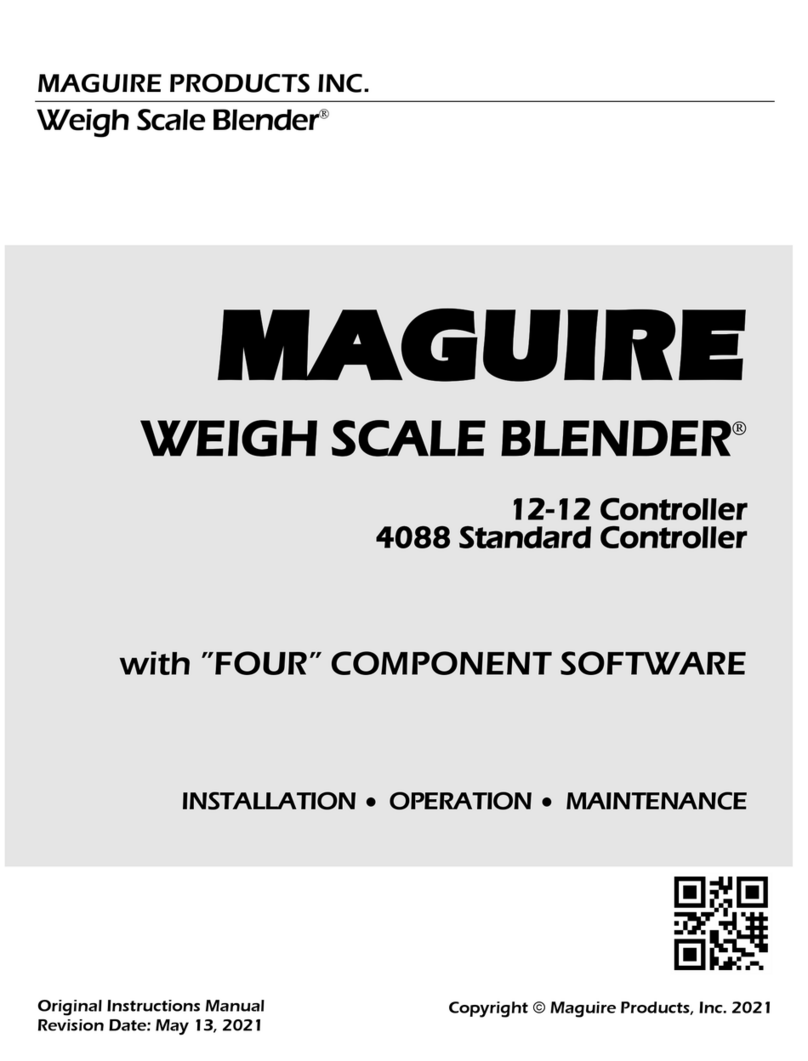
MAGUIRE
MAGUIRE Weigh Scale Blender Installation operation & maintenance

